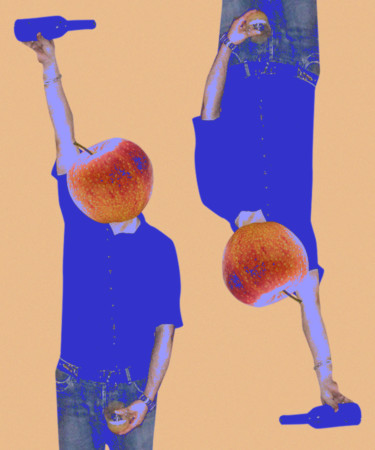Take a trip to Asturias, one of the autonomous communities of northern Spain, and you’ll encounter what appears to be a performance every time someone pours a glass of hard cider. Asturian servers extend one arm high above their heads with a bottle of cider and pour out the amber liquid in a long cascade down to just below their waist, where their other hand holds a glass to catch it. This peculiar process, known as escanciado, is not just a spectacle — it’s the traditional way to complete the Asturian cider-making process.
It shouldn’t be a surprise that cider production is a part of Spain’s rich, gastronomic culture. Historically, the northwestern regions of the country are rooted in the traditions of Celtic settlements, and the Celtics had been producing cider since before the birth of Christ. Today, traditional cider is still often associated with historically Celtic territories, be it Irish dry cider, English cider, French cidre from Celtic Brittany, or sidra, as it is known in Spanish. The northern province of Asturias has a particular association with the beverage; it alone produces roughly 80 percent of all the cider in Spain.
With such a thriving industry, there are quality standards in place by a regulatory council to maintain Asturias’ Designation of Origin classification, a system similar to Italian DOCs or French AOCs in wine production. While there are roughly 500 varieties of apples growing in Asturias, only 76 of them make the cut for the 27 mills producing cider within the Sidra de Asturias appellation. These apples are harvested and transported to cider mills, where they are washed, chopped, and pressed for their juices. The juice blend is then aged and naturally fermented with wild yeasts for about six months, ultimately yielding a sidra natural with 5 to 6 percent ABV.
While most modern fermentation happens in stainless steel tanks, the origin of the escanciado process comes from the method of tapping old-school chestnut barrels. Tapping a barrel shoots out a stream of cider at a trajectory to be caught in a glass, which aerates the booze in the process. Like wine, as cider is exposed to oxygen, its flavors and aromas are released as it breathes.
“It brings the cider back to life,” says Ana González Ferrero of Trabanco cider mill, a major producer of natural cider in the Asturian city of Gijón.
In Basque country, cider is still traditionally aerated and served by a stream spouting from a barrel. In Asturias, sidra Asturiana is stored in special bottles that have slightly curved bottlenecks known as the pierna de dama (lady’s leg), which is meant to slow down the rate of the pour. These bottles are a lot more convenient than a barrel for bringing cider out to a picnic, however, most Asturian cider serving and consumption takes place inside pubs called sidrerias. These cider pubs typically serve local cheese plates or salty tapas to complement the semi-sweetness and kombucha-like funkiness of the natural cider.
Pouring cider the Asturian way is easier said than done. First, with a bottle of cider at an arm’s length extended upward, the escanciador must carefully line up the opening of the bottleneck with the glass underneath. Then, the tilting of the bottle to release the fermented juice must be precise; if the angle is too high and thus the pour too strong, the trajectory of the stream will curve forward, resulting in spilled and wasted cider. Many locals start practicing escanciado as children by using cider bottles filled with water. Some siderias have sawdust all over the floor to absorb spills, while others have nomechisques (literally “don’t splash me”), or waist-high semi-cylindrical guard shields on rollers that catch spills and minimize spray toward the customer.
The spray resulting from catching the liquid stream is unavoidable, and in fact, it’s a part of the refinement of the cider. A proper Asturian cider pour is captured at the top of the inside of the glass, held at about a 45-degree angle. It’s the collision of liquid on glass that promotes liveliness and effervescence in the beverage. Traditionally, Asturian cider is drunk in culines (gulp-sized servings), so a proper pour needs only to be a mouthful’s worth, not a full glass. This allows the drinker to enjoy bubbly, revitalized cider in every swig, and the cider never goes flat.
However, not everyone in a group may know how to perform escanciado. Some places have tabletop escanciador hand pump contraptions, which extract and spray cider with the simple mechanics of a spray bottle, directly into a glass propped up underneath at the proper angle. Alternatively, “sparkling ciders” undergo a second fermentation similar to that in the Champagne-making process to produce and trap carbon dioxide naturally — thus eliminating the need to add bubbles by catching a long stream altogether.
Despite these hacks to make the process easier and drier for all involved, escanciado is a bona fide part of Asturian culture that must be experienced. Not only does it bring cider back to life, it also breathes life into a party. Think about that the next time you’re pouring a bottle of cider into a glass anywhere outside Asturias. While you may enjoy that cider, know that somewhere in northern Spain, cider drinkers are showing off their escanciado skills, feeling revitalized as fresh bubbles on their tongues with each and every gulp. ¡Salud!
